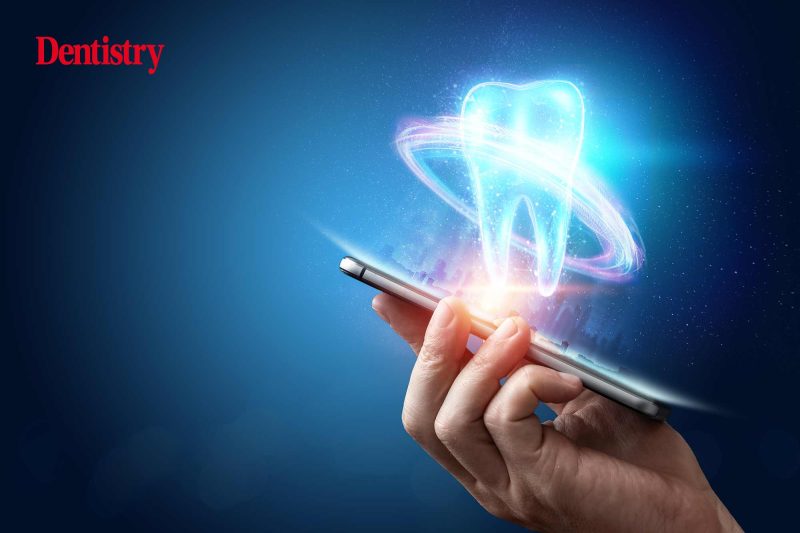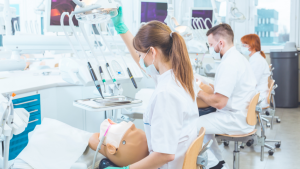Four predictions for the future of AI in orthodontics

Damian Gerikhanov discusses AI in orthodontics and why he believes the future of clear aligner treatment planning is ‘bright and promising’.
The orthodontic industry is quickly finding ways to adopt AI in treatment planning software to automate tedious and time-consuming tasks.
In fact, some digital treatment planners on the market can even reduce time for some of these tasks by 95% – a task that used to take around 90 minutes that now can be completed in about five minutes. This is all thanks to the power of proprietary algorithms.
This automation is already helping orthodontists increase patient acceptance rates, improve patient outcomes, and increase aligner quality at a fraction of the cost compared to traditional solutions.
Some might assume that if we automate nearly all stages of the manual labor that goes into treatment planning there won’t be much work left for orthodontists or technicians. In fact, the opposite is true – the clinical expertise of doctors is nearly impossible to replace and it is crucial to have doctor oversight no matter how proficient the technology becomes.
That begs the question: What will happen when most – if not all – steps in treatment planning are automated? What big technological innovations are next for the orthodontic industry?
With the integration of AI in orthodontics poised to bring even more significant developments and impact the field in various ways, here are four predictions for how I expect new technologies to change the orthodontic industry in the coming years…
1. Easier and better treatment of more complex cases
One of the immediate benefits of AI in orthodontics is its capacity to handle complex cases with more ease than ever before.
AI can provide valuable insights and recommendations because it distills expertise from thousands of cases. It allows even general practitioners to have more insight into a patient’s situation.
This democratisation of expertise can lead to more efficient orthodontic care.
2. AI-powered chatbots
AI-powered chatbots will enhance the treatment planning experience by providing quick responses to common queries.
Currently, when a person conducting treatment planning relies on the expertise or manual help of a remote technician to create or adjust a treatment plan, it can take 24 to 48 hours to receive the requested changes or feedback. Then once they get a response it might prompt even more questions or adjustments to the plan.
As a result, the feedback loop of questions and answers can take days or weeks, greatly delaying treatment planning time.
On the other hand, in a world where chatbot assistance is commonplace, technicians can get immediate information and answers to routine questions, improving communication and eliminating wait times for responses.
The AI-powered chatbots will be proficient at answering questions because they will have the ability to distill the expertise and input from doctors and thousands of cases to provide real-time feedback. This will help make treatment planning much faster and more accurate because it can also help to reduce human error.
AI chatbots could eventually have the ability to perform tasks that would typically require manual intervention from the user. The user would be able to give freeform instructions to the AI and then it will execute the corresponding set of actions to achieve the desired result. This interaction would resemble a typical chatbot exchange, with the user able to provide clarifications, while the chatbot dynamically applies changes in near real-time.
Furthermore, if the user chose to do some tasks themselves, the chatbot might hypothetically observe the user’s actions and provide suggestions for potential improvements, thus enhancing the overall user experience.
3. Better patient education and communication
New technologies can assist in patient education by providing visual aids and explanations of treatment procedures. Patients can have a clearer understanding of their orthodontic issues and the proposed solutions, leading to more informed decision-making and potentially higher treatment compliance.
I predict that patient-facing apps will become a go-to tool. Today, there are a few solutions that allow patients to use their smartphones to upload photos and videos of their faces that are then overlaid with predicted results to help patients visualise the potential outcomes.
The problem is that this technology is still early on, so it isn’t as accurate or informative as it could be. In the future, I believe that this technology will not only help improve diagnostics and issue identification, but it will become commonplace and used by all doctors to help patients see what their new and improved smile will look like.
4. Interdisciplinary approach
Orthodontics is often thought of as a standalone discipline, when in fact oral care is so intertwined with the entire human body.
For instance, if teeth aren’t aligned correctly it can cause issues with breathing, blood circulation and more. Posture and spine-related issues can often be closely related with orthodontic conditions. That’s why the most prominent prediction I have is that the integration of orthodontics with other medical disciplines will be revolutionary in terms of providing holistic, comprehensive care.
Addressing general health and wellbeing by considering the interconnectedness of oral health with overall health is an exciting prospect that I predict will become more mainstream over the next 10 years. And AI can play a crucial role in facilitating this interdisciplinary approach.
The next generation of oral care: concerns and considerations
There are ethical concerns associated with the use of AI in orthodontics that we should address. As AI becomes more integral to the decision-making process, it’s crucial to ensure transparency and accountability. Patients need to be aware of the role of AI in their treatment and understand that it is a tool to aid, not replace human expertise.
Moreover, there should be mechanisms for validating AI-generated treatment plans and collecting real-world data post-treatment to improve AI systems and address software shortcomings.
While AI can assist in treatment planning and decision-making, the ultimate responsibility still lies with the treatment provider. It’s essential for orthodontists to interpret and validate AI-generated recommendations, ensuring they align with the best interests of the patient.
AI is only a tool to provide information and inform decisions, so it is important to note that just because doctors will have access to unprecedented technology, at the end of the day the doctor will always need to make the final call.
AI has the potential to enhance the overall patient experience in orthodontics by providing more efficient and accurate treatment planning, improved communication, and better diagnostics.
One thing remains clear: the future of the orthodontics industry is bright and promising.
Follow Dentistry.co.uk on Instagram to keep up with all the latest dental news and trends.







